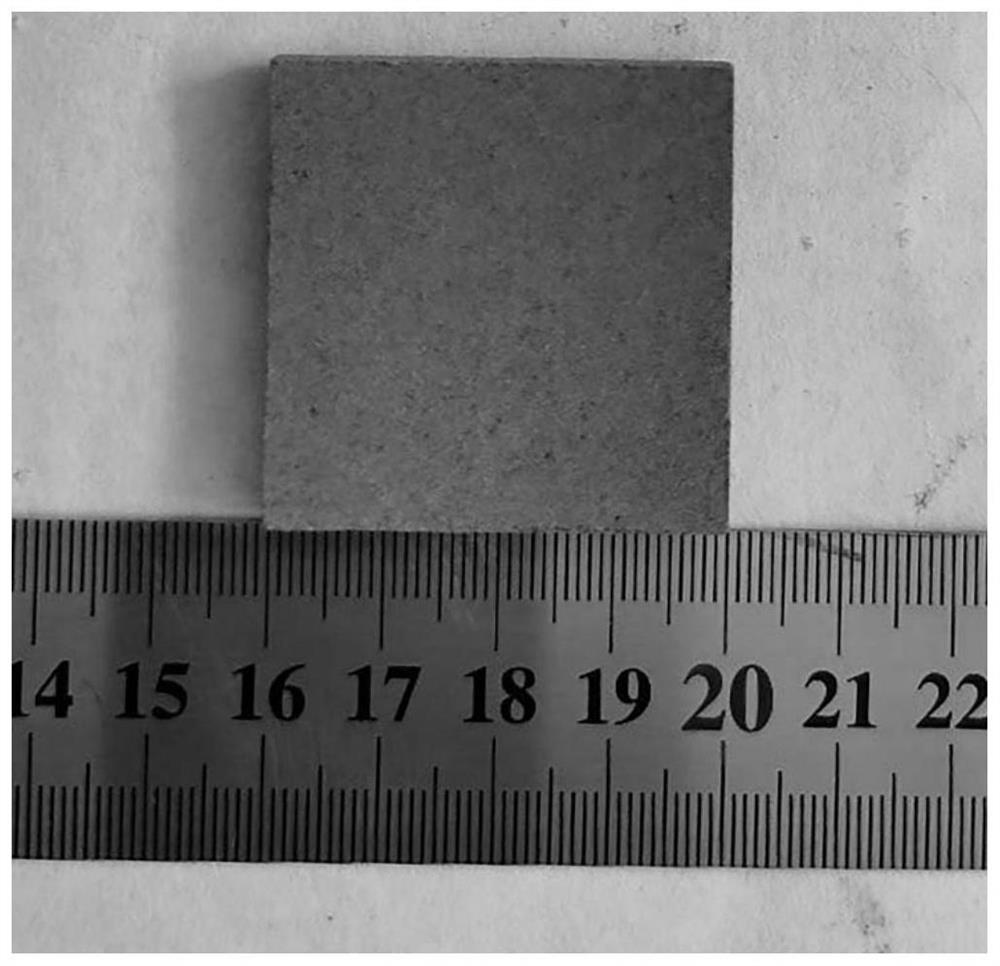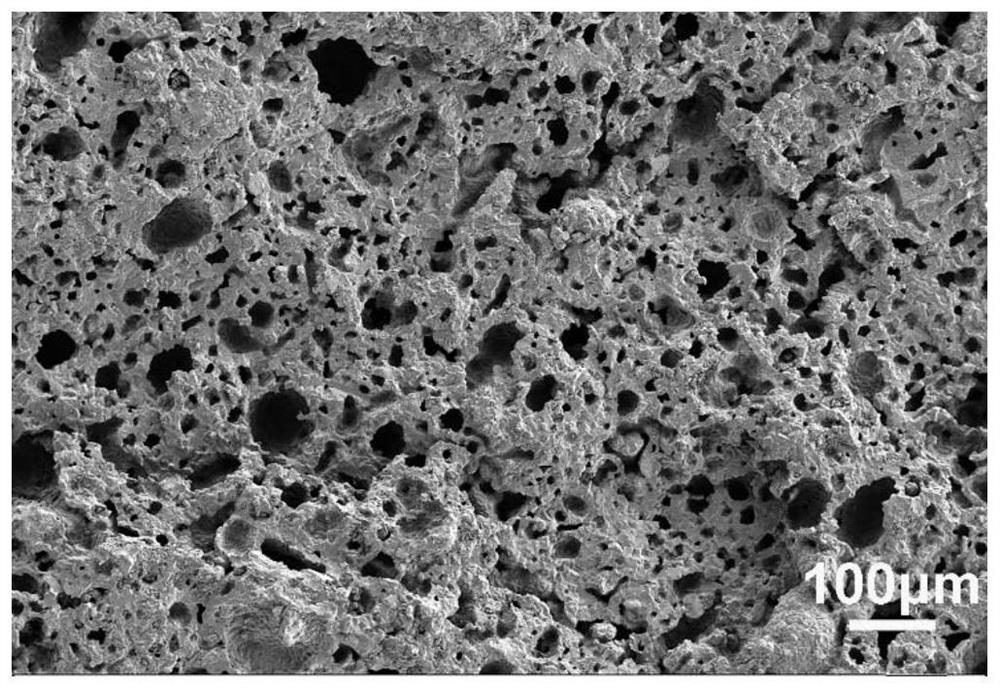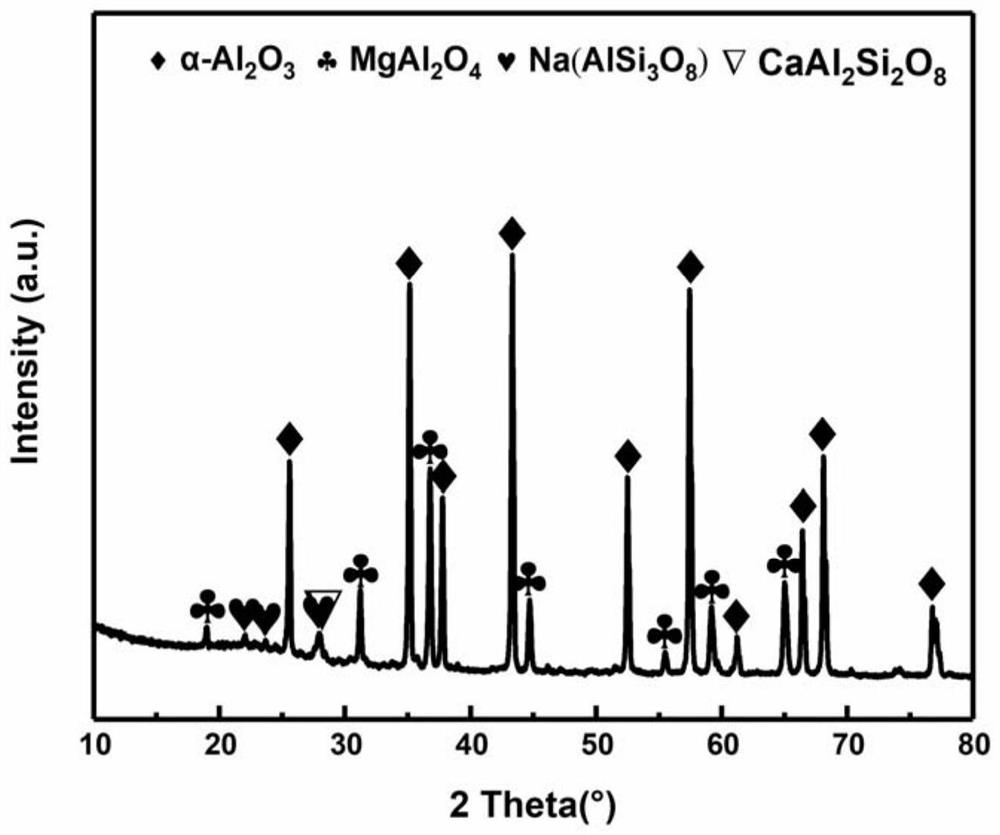Method for preparing low-shrinkage porous ceramic through high-temperature self-foaming of aluminum ash
A technology of porous ceramics and aluminum ash slag, which is used in the production of ceramic products, ceramic materials, clay products, etc., can solve the problems of land resource occupation, groundwater pollution, increase production cycle, energy consumption and cost, etc., and achieve low shrinkage rate. , low cost, and the effect of solving pollution and harm problems
- Summary
- Abstract
- Description
- Claims
- Application Information
AI Technical Summary
Problems solved by technology
Method used
Image
Examples
Embodiment 1
[0031]A method for preparing low-shrinkage porous ceramics by high-temperature self-foaming of aluminum ash slag, the method comprising: dry-milling aluminum ash slag for 24 hours with a planetary ball mill, and transferring the ball-milled aluminum ash slag to an oven. The temperature of the oven was set at 60° C., and dried at this temperature for 24 hours, and then sieved through a 115-mesh sieve after drying. The sieved aluminum ash powder is uniformly sprayed with a polyvinyl rolidone solution with a concentration of 10.00wt.% for spray granulation, and the added amount of the solution accounts for 1.00wt.% of the total mass of the powder. The uniformly mixed powder was dry-pressed at 10MPa with a dry-press molding machine, the holding time was 1min, and then demoulded. The demoulded green body was sintered at 1500°C for 2 hours, and the heating rate was set at 2°C / min to make porous ceramics with a porosity of 40%, a shrinkage rate of 2%, and a bending strength of 78MPa....
Embodiment 2
[0034] A method for preparing low-shrinkage porous ceramics through high-temperature self-foaming of aluminum ash slag, the method comprising: using a planetary ball mill to wet-mill the aluminum ash slag with alcohol for 15 hours, and transferring the ball-milled aluminum ash slag to an oven. The temperature of the oven was set at 75° C., and dried at this temperature for 30 hours, and then sieved through a 240-mesh sieve after drying. The sieved aluminum ash powder is uniformly sprayed with polyethylene glycol with a concentration of 1.00wt.%, and the added amount of the solution accounts for 1.25wt.% of the total mass of the powder. The uniformly mixed powder was dry-pressed at 8 MPa with a dry-press molding machine for 10 minutes under pressure, and then demolded. The demoulded green body was sintered at 1350°C for 0.5h, and the heating rate was set at 8°C / min to make porous ceramics, with a porosity of 78%, a shrinkage rate of -9%, and a bending strength of 1.8MPa.
Embodiment 3
[0036] A method for preparing low-shrinkage porous ceramics by high-temperature self-foaming of aluminum ash slag, the method comprising: using a planetary ball mill to wet-grind aluminum ash slag for 0.5 hours with alcohol, and transferring the ball-milled aluminum ash slag to an oven. The temperature of the oven was set at 35° C., dried at this temperature for 72 hours, and then sieved through a sieve with a pore size of 240 mesh. The sieved aluminum ash powder is evenly sprayed with a polyvinyl alcohol solution with a concentration of 5.00wt.% for spray granulation, and the amount of the solution added accounts for 2.00wt.% of the total mass of the powder. The uniformly mixed powder was dry-pressed with a dry-press molding machine at 20 MPa for a holding time of 20 minutes, and then demoulded. The demoulded green body was sintered at 1200°C for 24 hours, and the heating rate was set at 20°C / min to make porous ceramics, with a porosity of 70%, a shrinkage rate of -10%, and a...
PUM
| Property | Measurement | Unit |
|---|---|---|
| flexural strength | aaaaa | aaaaa |
| flexural strength | aaaaa | aaaaa |
| flexural strength | aaaaa | aaaaa |
Abstract
Description
Claims
Application Information
 Login to View More
Login to View More - R&D
- Intellectual Property
- Life Sciences
- Materials
- Tech Scout
- Unparalleled Data Quality
- Higher Quality Content
- 60% Fewer Hallucinations
Browse by: Latest US Patents, China's latest patents, Technical Efficacy Thesaurus, Application Domain, Technology Topic, Popular Technical Reports.
© 2025 PatSnap. All rights reserved.Legal|Privacy policy|Modern Slavery Act Transparency Statement|Sitemap|About US| Contact US: help@patsnap.com



